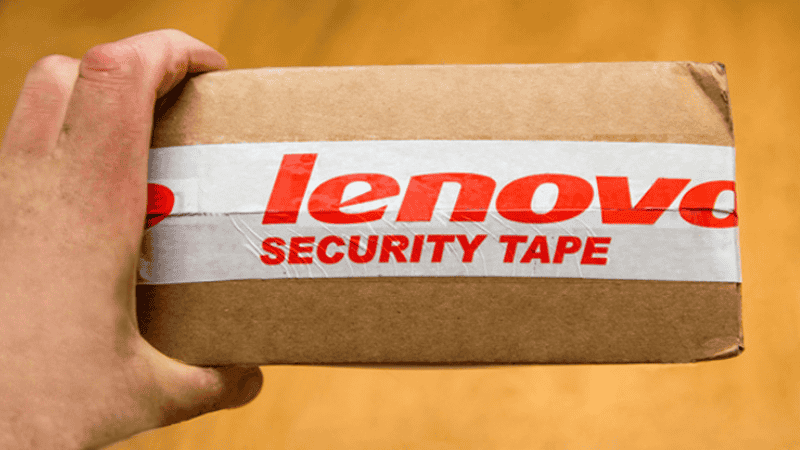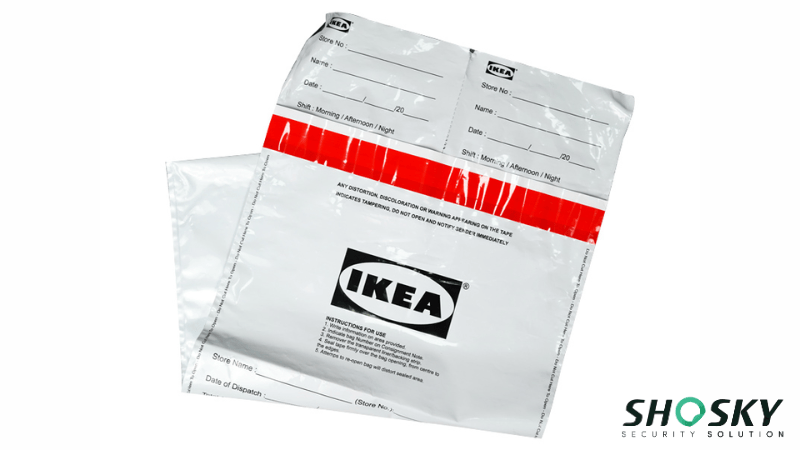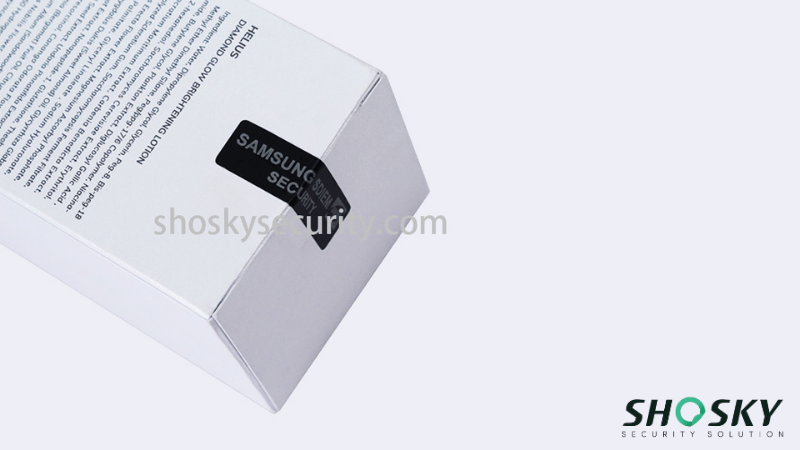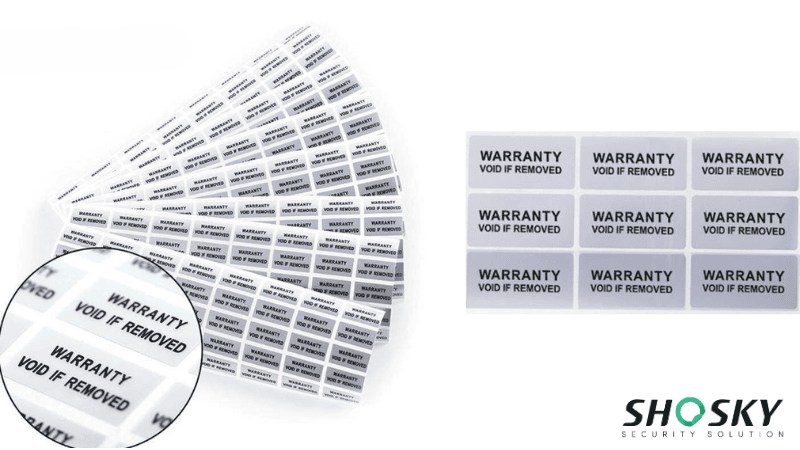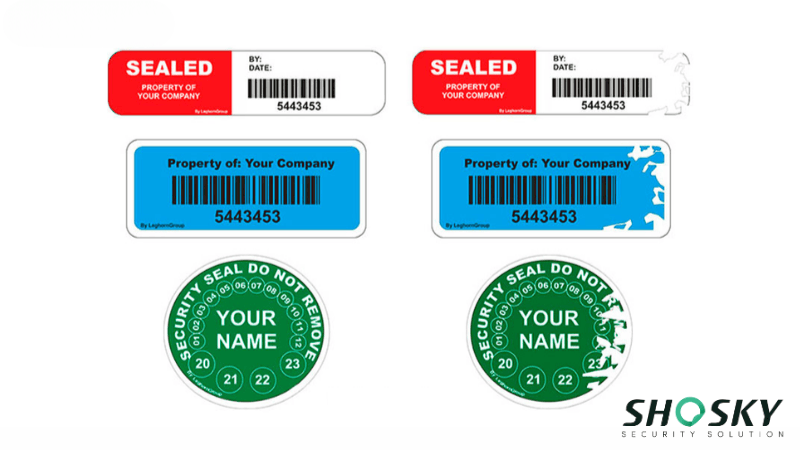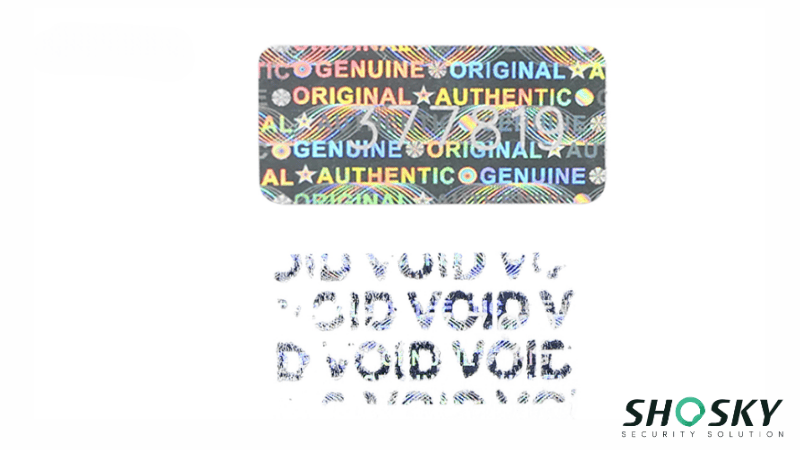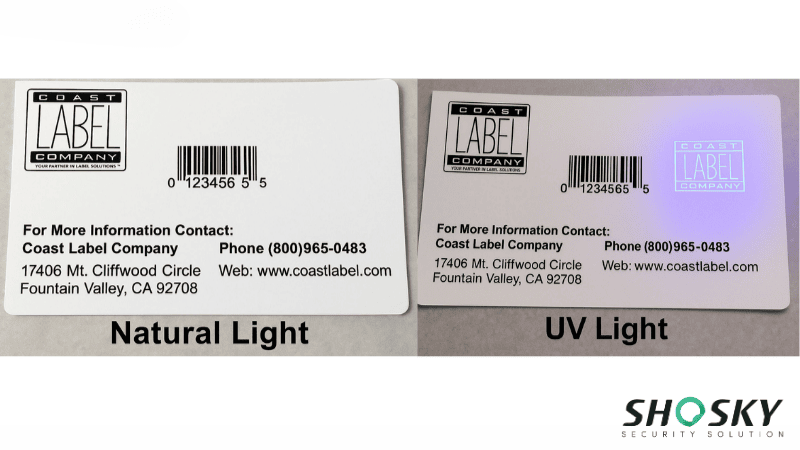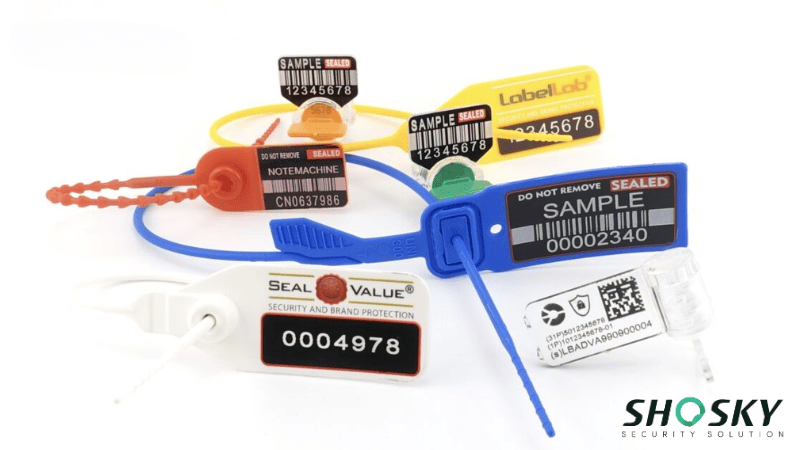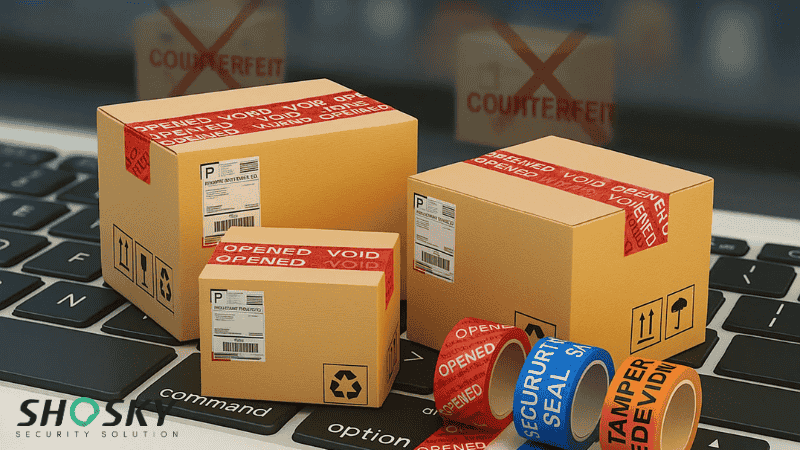Counterfeiting doesn’t just hurt B2C brands. Now, more B2B companies are finding their products getting copied, repackaged, and sold without consent. And it’s not just a legal headache—it’s a business growth blocker. These fakes are entering professional supply chains, disrupting contracts, and damaging hard-earned business relationships.
In fact, every 24 hours, counterfeiters are generating approximately $1.4 billion in illicit sales, diverting revenue that rightfully belongs to authentic brands like yours. That’s billions lost not only in sales but also in future market opportunities. In this article, we’ll explain five ways counterfeiting chips away at your business and how tamper-evident solutions can help.
Understanding the Scope of Brand Counterfeiting
Counterfeit products are a global crisis, costing businesses over $1.8 trillion annually. And it’s not just limited to fake handbags or imitation electronics. It spans nearly every industry—from fashion and pharmaceuticals to industrial tools and automotive parts.
No business is too small or too niche to be targeted. Counterfeiters follow market trends, targeting popular, high-demand products where customer trust plays a huge role. When a fake enters the market, it creates confusion, lowers perceived value, and puts your brand’s reputation at risk.
In the B2B world, the impact is even more dangerous. Unlike direct-to-consumer brands, B2B brands often rely on complex distributor networks, which makes it harder to detect fake goods in the system. Counterfeiters take advantage of these gaps to slip in lookalike products.
What makes this more concerning is how easy it is for counterfeiters to thrive. Online marketplaces and cheap production methods make it easy for fake products to blend in with real ones. And without tamper-evident packaging, fake items can pass as real ones. This not only puts your customers at risk but also damages your reputation in ways that are hard to repair.
5 Ways Counterfeiting Damages Brands
The damage from counterfeiting doesn’t show up in just one place—it cuts across every layer of a brand. What starts as a knockoff on a shelf can ripple into lost customers, dropped sales, legal messes, and long-term brand fatigue. These five points show how deep the damage goes—and why protection isn’t optional anymore.
1. Loss of Customer Trust and Brand Loyalty
When consumers purchase counterfeit goods believing them to be authentic products, the damage to brand trust is immediate and often irreparable. Studies show that 58% of customers who experience a negative incident with what they believe is your brand’s product never return, regardless of whether it was actually a fake.
This erosion of consumer trust happens quickly but rebuilds painfully slowly. Your brand promises are broken in customers’ minds through no fault of your own. The consequences become particularly severe with counterfeit pharmaceuticals, cosmetics, or children’s products that can cause physical harm.
One pharma company found that counterfeits containing harmful ingredients led to a 32% drop in legitimate sales after consumers blamed the authentic brand. Social media amplifies this reputational damage, with negative reviews of fake products often garnering 3-5 times more engagement than positive ones. Without proper brand protection measures, your most loyal customers become your most vocal critics.
2. Declining Sales and Missed Revenue Opportunities
Counterfeit products directly siphon revenue from legitimate businesses, representing approximately 3.3% of world trade. The luxury sector alone loses approximately $30 billion yearly to counterfeits. But the financial impact extends far beyond these immediate losses.
Poor customer experience with fakes leads to long-term revenue recovery challenges and diminished repeat purchases. Companies implementing comprehensive brand security strategies report recovering 15-22% of previously lost market share within two years.
The cost savings of preventing counterfeit goods from entering the market far outweigh the investment in protection technologies. Industries most severely impacted include electronics (annual losses of $169 billion), pharmaceuticals ($217 billion), and fashion ($27 billion). Even small businesses experience revenue declines averaging 18% when counterfeiters target their product line, often lacking the resources for proper brand protection.
3. Increased Legal and Compliance Risks
The liability from harm caused by counterfeit products frequently falls on the authentic brand, regardless of fault. A well-known case involves Hewlett-Packard (HP) in 2008, where counterfeit power cords and batteries caused fire risks. HP had to recall thousands of laptop batteries and faced scrutiny, despite not producing the faulty parts.
Authentic brands often bear the financial burden of product recalls, regulatory investigations, and consumer litigation stemming from issues with goods they never produced. Regulatory crackdowns in sensitive sectors like pharmaceuticals, food, and electronics now hold brands accountable for ensuring greater protection of their supply chains.
For instance, under the European Union’s Falsified Medicines Directive, pharmaceutical companies are required to implement track-and-trace systems to verify the authenticity of medicines and prevent counterfeit products from entering the supply chain. These legal challenges divert critical resources from innovation and market expansion, further eroding a brand’s competitive advantage.
4. Damaged Relationships with Distributors and Retailers
Counterfeit goods infiltrating supply chains can erode trust between brands and their distributors or retailers. A-CAPP research highlights that small and medium enterprises (SMEs) often struggle to maintain partnerships when counterfeit risks aren’t adequately addressed.
Major retail platforms now demand visible evidence of brand protection strategies before forming partnerships, viewing brands with counterfeiting problems as potential liabilities. They demand that brands deliver verification technologies and assume liability for any counterfeit products that slip through.
This creates particular challenges for smaller legitimate businesses seeking to scale through retail partnerships. Surveys show that 62% of distributor buyers consider a brand’s anti-counterfeiting measures when making purchasing decisions, directly affecting your ability to maintain market position and access to consumers.
5. Erosion of Brand Equity and Market Position
Counterfeit products can significantly undermine a brand’s perceived uniqueness, especially for luxury goods. A study by the University of Modena and Reggio Emilia found that counterfeit goods negatively impact the perceived exclusivity of luxury brands, diminishing their market position.
Brands also bear the financial burden of increased marketing and anti-counterfeiting efforts. According to the U.S. Chamber of Commerce, companies allocate a significant portion of their marketing budget to protect their intellectual property and combat counterfeit activities, diverting resources away from growth initiatives.
In the long run, counterfeiting can lead to a decline in brand value. The same U.S. Chamber of Commerce report reveals that brands heavily targeted by counterfeiters can experience a 28% drop in valuation over five years, further eroding their market position and making it harder to sustain growth.
How Tamper-Evident Packaging Prevents Counterfeiting
Tamper-evident packaging is one of the most effective ways to prevent counterfeiting and protect a brand’s intellectual property rights. These security features are designed to provide visible evidence of tampering and build consumer trust by showing whether a product is authentic or compromised.
Here are the main types of tamper-evident solutions and how they prevent counterfeiting:
Void Labels
These security labels leave a clear “VOID” message or similar pattern on the packaging surface when removed. They make it obvious if someone has tried to interfere with the product. For industries like electronics or cosmetics, where consumer safety and brand trust are key, this visible signal reassures buyers that the product is untouched.
Destructible Seals
Made from ultra-fragile materials, these seals split or crumble on contact. Once broken, they can’t be reapplied, making them a strong defense against counterfeiters trying to repackage goods.
These seals help maintain customer confidence, especially for brands dealing with high-value or sensitive products.
Hologram Labels
Custom holographic stickers and labels are difficult to duplicate, offering a strong layer of visual authentication. Many brands use these to align with their marketing strategy and highlight their commitment to genuine products.
UV Inks
These ink types are invisible under normal light and show up only under UV scanners or special lighting tools. They are ideal for internal checks and real-time tracking without affecting the external look of your product.
UV inks are often used alongside other technologies to create a multi-layered defense for brand trust and security.
Security Tapes
Security tapes seal packages with clear signs of tampering, like hidden messages that appear when the tape is lifted. They protect boxes during transit and storage, especially in logistics and shipping.
These tapes help stop unauthorized access and ensure customers receive products in their original, unaltered condition.
Security Seals
These seals are often applied to containers, jars, or equipment to lock packaging physically. Once broken, they can’t be resealed without clear damage.
Security seals are widely used in industries like food, healthcare, and industrial goods where safety, compliance, and authenticity are critical.
When implemented properly, these tamper-evident technology features don’t just protect a brand’s product line—they help meet customer expectations, improve customer experience, and serve as a visible commitment to authenticity and safety.
For many legitimate businesses, investing in these solutions leads to long-term cost savings, reduced losses from counterfeit goods, and stronger brand loyalty. It’s not just about preventing harm—it’s about fulfilling the promise your brand makes to customers every day.
Calculating the ROI of Anti-Counterfeit Packaging
Many brands hesitate to adopt tamper-evident packaging because of the upfront cost. But when you compare the cost of security solutions to the real financial impact of counterfeit goods, the value becomes clear. Counterfeiting leads to lost revenue, product returns, legal risks, and declining market share—all of which chip away at long-term growth.
Anti-counterfeit packaging should be viewed as an investment, not an expense. The competitive advantage brands gain from tamper-evident packaging is substantial. It directly supports better customer experience, builds brand value, and protects intellectual property rights.
Over time, businesses see measurable gains, such as:
- Fewer product returns due to tampering or fakes.
- Higher customer retention through increased consumer trust.
- Stronger brand reputation in competitive markets.
- Improved consumer safety, especially in industries like pharma or food.
- Lower legal and compliance costs are tied to counterfeit-related harm.
These outcomes aren’t just theoretical—many brands have seen the difference in hard numbers. Here’s a comparison of key business metrics with and without tamper-evident packaging:
| Item | Without Tamper-Evident Packaging | With Tamper-Evident Packaging |
|---|---|---|
| Estimated Annual Revenue Loss | $500,000 | $50,000 |
| Customer Retention Rate | 60% | 85% |
| Legal/Liability Costs | $100,000 | $5,000 |
| Distributor Complaints | Frequent | Rare |
| Brand Sentiment (Survey Score) | 3.2 / 5 | 4.7 / 5 |
In industries where customer confidence can make or break a brand, tamper-evident packaging also strengthens your marketing strategy. It sends a clear message: you care about quality, safety, and delivering what you promise. As a result, buyers are more likely to make repeat purchases, helping you recover lost margins and maintain a strong market position.
For many brands, especially those scaling globally, anti-counterfeit measures also open doors to better distributor relationships, wider retail access, and even cost savings from reduced fraud management. When viewed across the fiscal year, the return on secure packaging is often well above the initial investment.
FAQs
What industries are most vulnerable to counterfeiting?
Pharma, cosmetics, electronics, food, and fashion are hit hardest. These industries face major risks to consumer safety and brand trust.
How can I tell if my products are being counterfeited?
Look for sudden drops in sales or poor reviews about quality. Check if your brand’s product is being sold elsewhere at suspicious prices.
What’s the best tamper-evident solution for small businesses?
Void labels and destructible seals are simple and low-cost. They help protect your brand while keeping your customer experience strong.
Conclusion
Counterfeit products don’t just cost you sales—they damage your brand’s trust, reputation, and long-term growth. From lost revenue to broken promises, the impact runs deep across every part of your business. But the good news is, you can fight back. Tamper-evident packaging offers real protection, visible proof, and peace of mind for your customers. So, don’t wait until you’re targeted—protect your brand now.
Protect Your Brand with Shosky Security’s Tamper-Evident Packaging Solutions
Shosky Security offers high-performance tamper-evident packaging designed to help brands detect, prevent, and deter counterfeit products. Ready to secure your products? Contact us to request your free sample kit or schedule a packaging consultation today!
